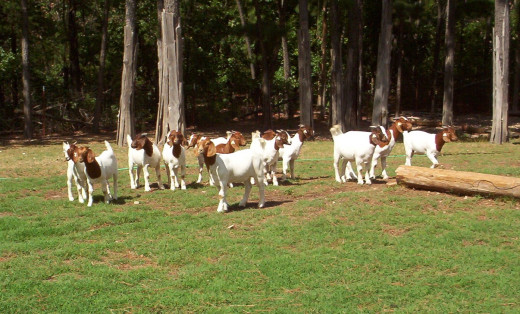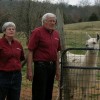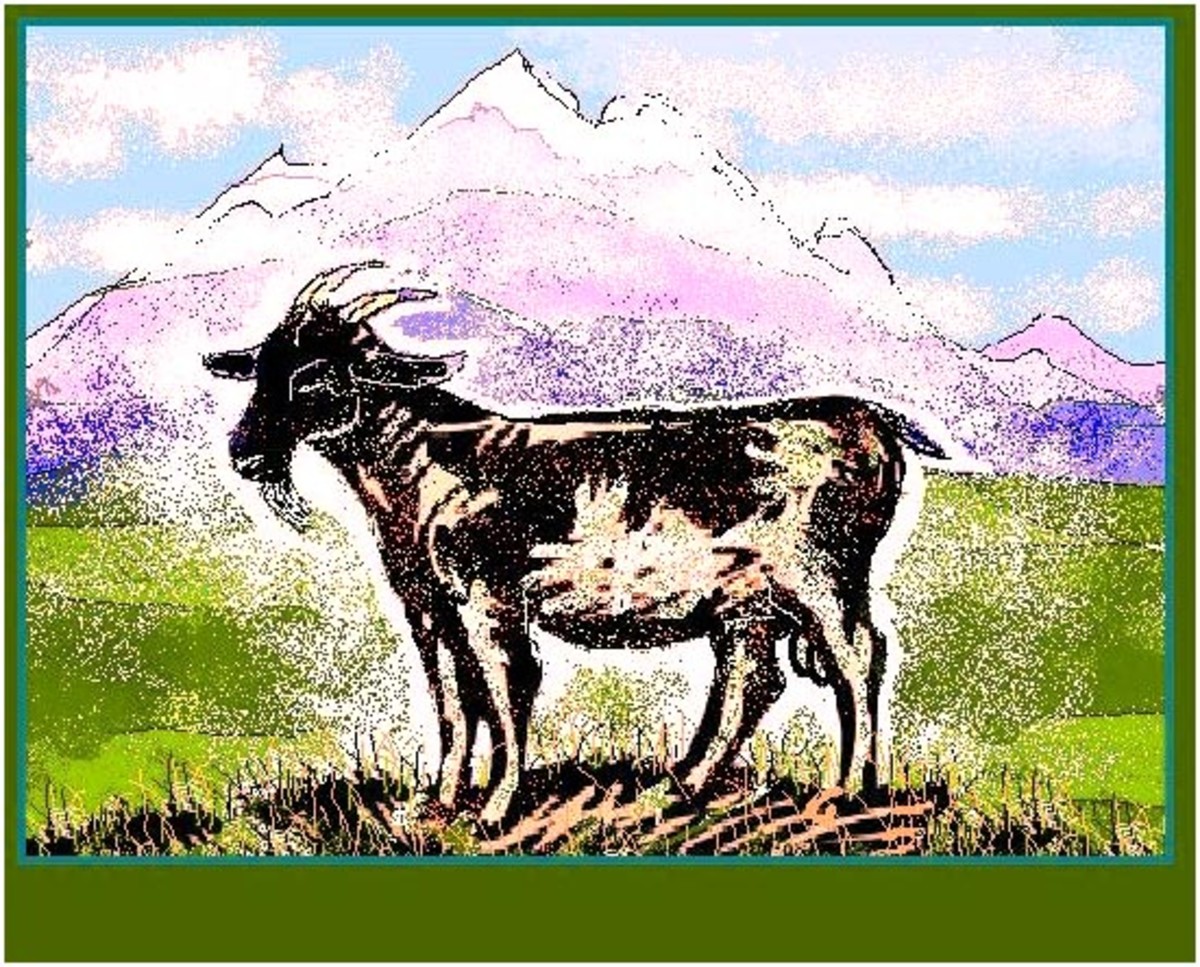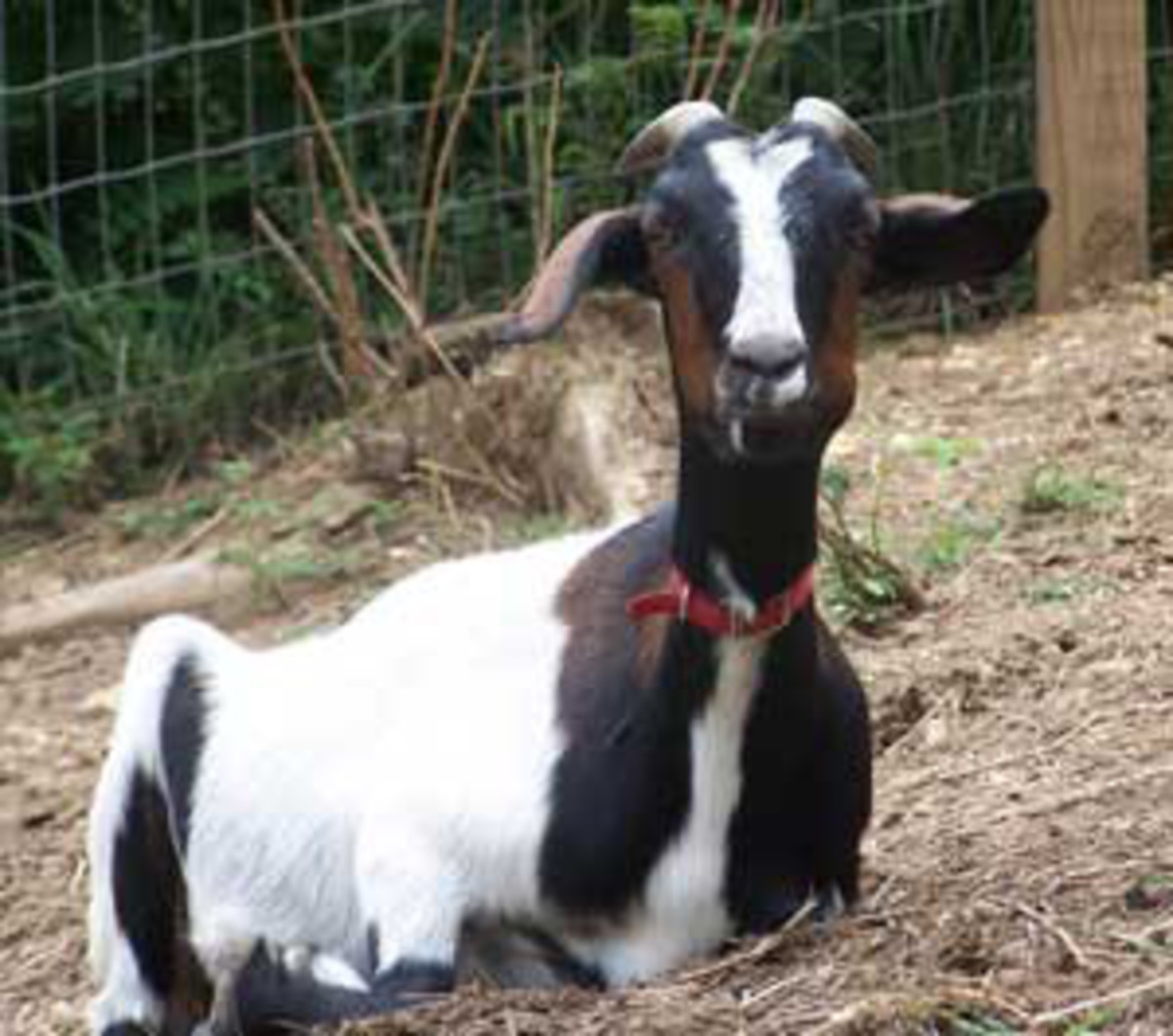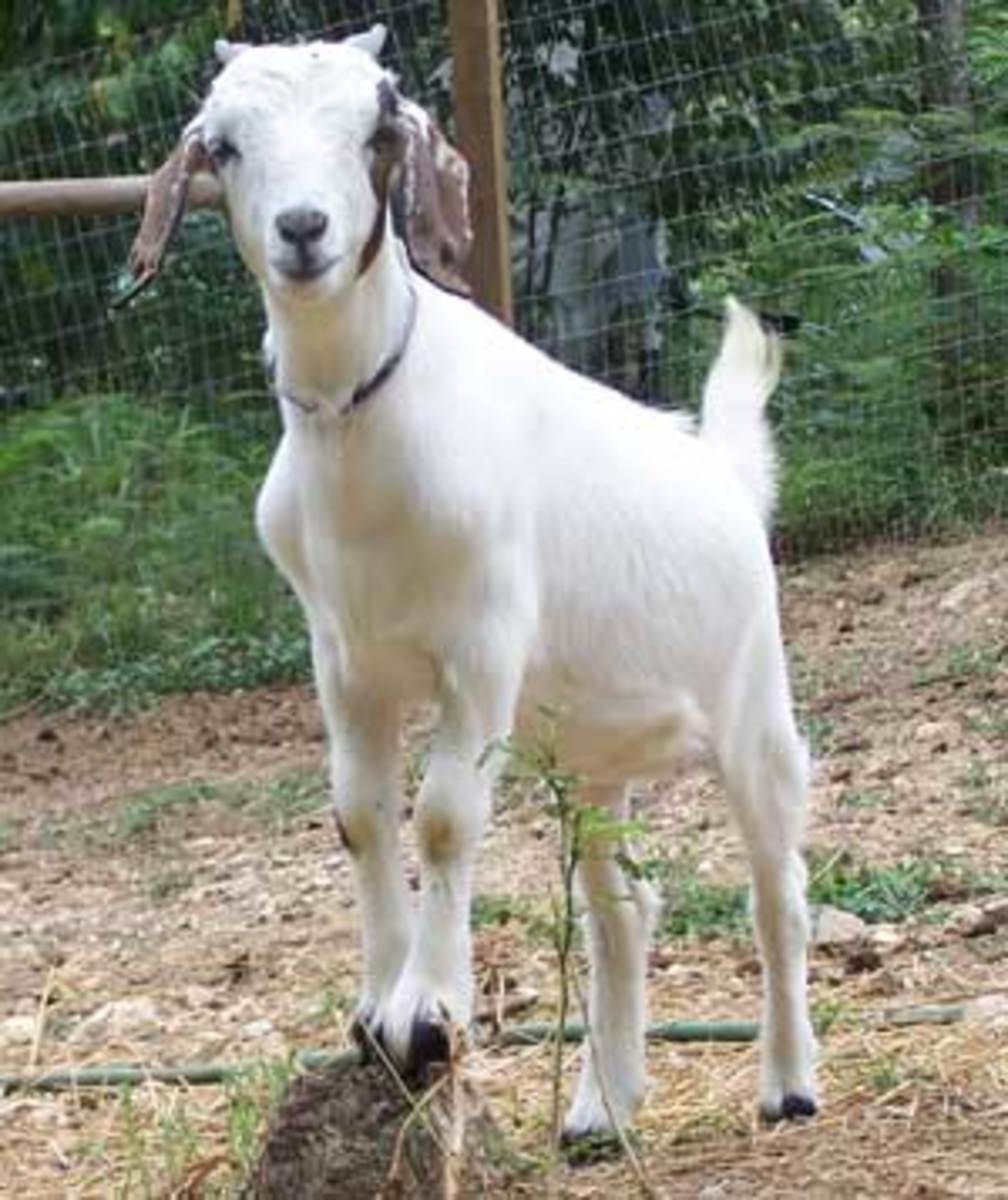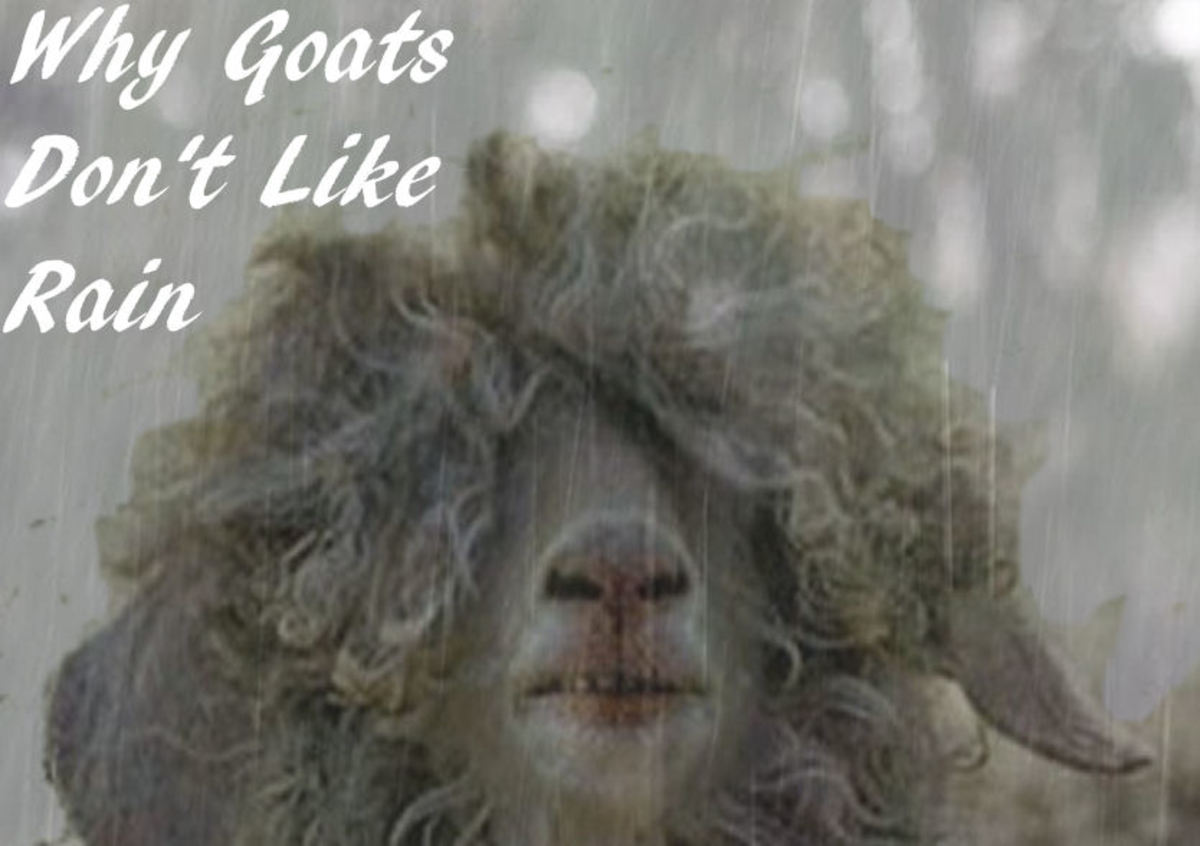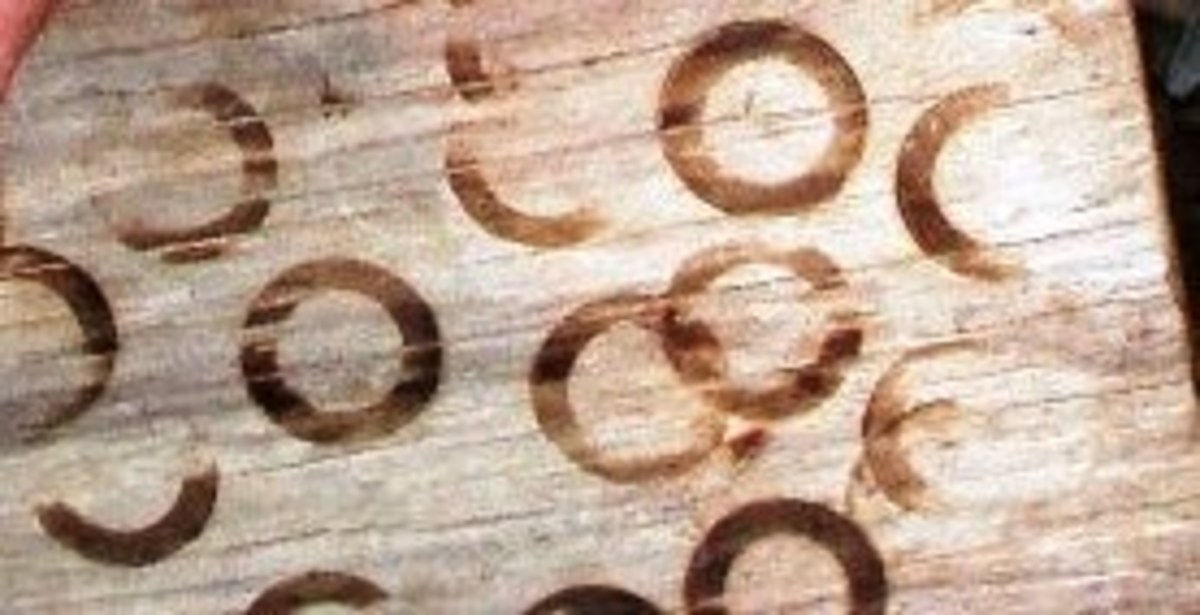Breeding Meat Goats
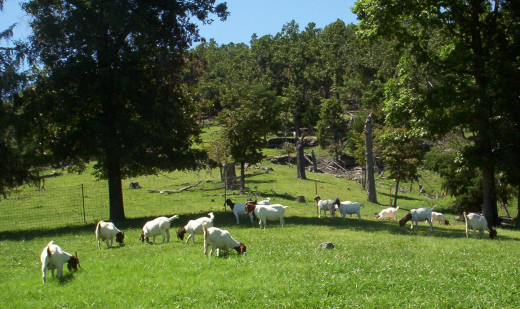
Boer Meat Goats Can Be Hardier Than Other Breeds!
Hardiness, resistance to internal parasites (worms in the intestinal tract,) fertility, and mothering ability are the most important characteristics for determining the profitability of commercial meat goats. Do Boers fall short in these four very important traits? The answer is some do. In fact many probably do, but they don't have to!
With the exception of Spanish goats, Boers have a much broader and more diverse genetic base than any of the other meat goat breeds. Several thousand full blood Boer goats were imported into the United States, while fewer than fifty animals each were imported for the Kiko and Savanna breeds. Full blood Boer goats were brought into the United States from New Zealand, South Africa, Australia, and Canada. This broad genetic base makes it easier for breeders to change and improve the Boer breed.
Because of the genetic diversity within the Boer bred, breeders who are selecting and breeding Boer goats for the very important traits of hardiness, resistance to internal parasites, fertility, and mothering ability are making faster progress than expected. The Boer breed can, and probably will, surpass the other breeds of meat goats for these traits in the near future. Breeders may even develop lines of Boer goats that never need to be wormed. This is a goal that can be accomplished if Boer breeders work together to do it.
Our experience in breeding full blood Boers has shown us that the heritability of resistance to internal parasites in Boer goats is much greater than we originally thought it would be. We have made great progress in improving our herd for this trait.
Boer breeders have developed a show goat industry that has made tremendous progress in improving the conformation of the breed for meat production. The competition among show goat breeders is fierce, and the financial stakes are very high. In breeding livestock, to make the fastest progress in improving one trait, one must select only for that trait and completely ignore all other traits. This is exactly what show goat breeders have been doing. They select only for the traits that are measured in the show ring, ignoring all other traits. To make faster improvements in their goats they use embryo transplant programs with kids being raised by surrogate mothers, usually dairy goats. Fertility and mothering ability cannot be measured or selected for under these conditions. These show goats are pampered and fed very expensive, high powered, feeds. These conditions are nothing like conditions found in a viable, pasture-based, commercial, meat goat operation. Many show goat breeders worm their goats every 30 days. One could not use goats produced under these conditions for commercial goat meat production. These show goats do have valuable genetics which can be combined with genetics from hardier lines of Boer goats to produce superior meat goats. So there is a valuable niche for the show goat within the Boer breed, but they cannot be used for commercial goat meat production without cross breeding with hardier lines of Boer goats or with other breeds of meat goats.
Financial rewards for breeding meat goats for hardiness are not as high as they are for breeding winning show goats. Boer breeders, who are breeding for hardiness, cannot afford to advertise the way the show goat breeders do. Thus it is more difficult for persons wanting to buy hardy Boer goats to find good breeding stock. These traits are also harder to measure in breeding stock. One often has to buy goats, take them home, and test them under pasture conditions to determine how good they are. Then one can cull the ones that aren't good enough. When buying breeding stock be careful not to pay too much for them. The great cattle breeder, Tom Lasater, once wrote: "One cannot make progress breeding livestock by purchasing expensive animals. One does not have the heart to knock a ten thousand dollar lemon in the head." Remember, culling is the most important tool one can use in breeding livestock.
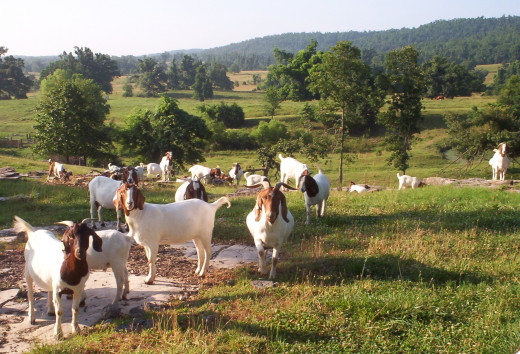
The Importance of Culling
Culling is picking out and putting aside something because it is inferior. When raising livestock one needs to constantly be looking for inferior animals and removing them from the herd. This is the only way one can improve, or even maintain, the quality and profitability of one's animals. Use of the word cull has negative connotations, and many people don't like to use it. If you want to be a successful meat goat producer, you better get used to the idea of culling. Get into the mindset of constantly looking for animals that need to be culled.
Culling is more important with meat goats than with dairy goats or other types of livestock. All of our meat goat breeds are composite breeds developed by crossing many diverse types of goats. The development of these breeds began quite recently, and breeders have not had time to fix the desirable characteristics and eliminate the undesirable ones. Even the best animals from some of the most popular "blood lines" will have offspring with undesirable traits that need to be culled. I put the term "blood lines" in quotes because most meat goat breeders do not know what the term means and are using the term incorrectly. So, be careful when someone tries to sell you "blood lines." They probably don't know what they are talking about.
I will point out some of the systems of culling that we use. Our goal is to produce top quality registered Boer bucks for commercial meat goat producers. We are breeding for hardiness, fertility, mothering ability, and resistance to internal parasites. These are very important traits for commercial meat goat producers and are totally ignored by many Boer breeders.
We try to avoid using veterinarians. Our experience has been that veterinarians usually charge more than a goat is worth, and a goat will often end up dying even after being treated by a veterinarian. Keep in mind that veterinarians, together with the veterinary school professors who trained them, are constantly being brainwashed by drug company sales representatives.
Dr. Steve Hart, a goat specialist at Langston University, once suggested, at a meat goat seminar, using a remedy which he called trailermycin (load the sick goat into a trailer and haul it to a sale barn.) We have decided to make trailermycin our drug of choice for everything. Keep in mind also that goats that are well fed stay healthier. Our philosophy is that the microorganisms that medications are designed to combat are only secondary causes of diseases. The ultimate cause will be one of two things: poor nutrition or poor genetics. The only cure for the latter is culling. Goats need to have optimum nutrition in order to accurately evaluate their genetics.
In selecting for resistance to internal parasites we cull all kids that need to be wormed before they are weaned at four months of age. We usually worm all of our kids at weaning. Some years we don't have to because of dry weather conditions. We worm all of our mature does on March first, one week before they start freshening. We cull any goat that needs to be wormed more often than once per year. To accurately measure genetics for parasite resistance one must have optimum nutrition and good sanitation.
Fertility and mothering ability are difficult traits to select for because does need to be two to three years old before the traits can measured. Meat goats will not be profitable if they do not have kids, if they do not care for and protect their kids, or if they do not produce enough milk for their kids to grow rapidly. We have found that goats that are parasite resistant are also more fertile and better mothers.
Culling is the only way one can improve or even maintain the quality and profitability of a meat goat herd. To be a successful meat goat producer, one needs to be constantly looking for animals that need to be culled.
Goat Hoof Trimming Stand

Vaccinating Goats
To select for hardiness we do not vaccinate our goats for anything. Most goats have the ability to develop a natural immunity to all of the diseases we can vaccinate for. I estimate that about twenty percent of full blood Boers do not have this ability. We cull this twenty percent. If we keep vaccinating all goats, eventually all of them will be unable to survive without being vaccinated. We have learned from experience that most kids will scour at some point in time between birth and five months of age. This scouring can be caused by stomach worms, coccidia, or bacteria; but what causes it is not important. If left untreated most kids will recover and become immune to whatever caused their scouring. The ones that don't recover need to be culled. We sell bucks to large commercial meat goat producers who do not vaccinate their goats.
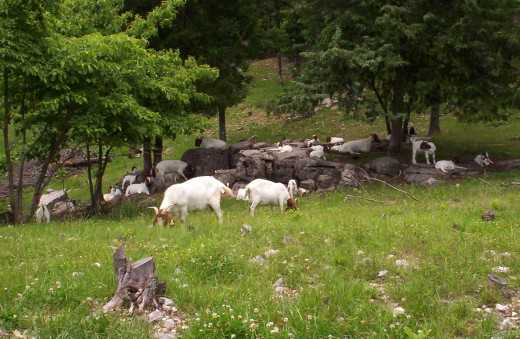
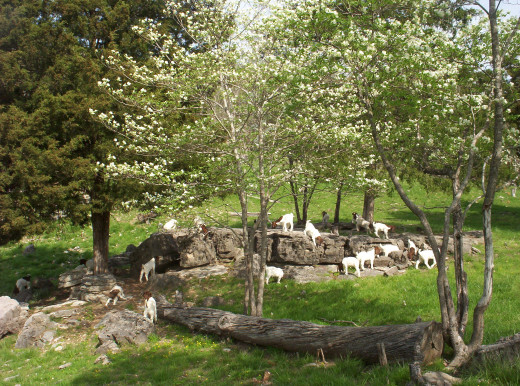
Hoof Trimming Shear

Trimming Hoofs on Goats
Hoof trimming is very time consuming, and time is worth money. The commercial meat goat producers, who have 300 to 1,000 goats running on 600 to 3,000 acres, cannot trim hooves. We know many producers who have that many meat goats.
Some goats need to have their hooves trimmed every two to three months, others never need them trimmed. After we had been breeding full blood Boer goats for about six years and had built our herd from a foundation of seven does to about twenty five does, we noticed that we had six does that needed to have their hooves trimmed every three months. After we examined the pedigrees of these six does, we found out that one of them was one of our original does, and the other five were daughters and granddaughters of that one doe. Needless to say we culled those six does.
None of the does in our present herd have ever had their hooves trimmed. Our does run on ten acres of steep Ozark Mountain pasture that has lots of limestone out-cropping. Show goats, which are confined to small pens and are fed high power rations, need to have their hooves trimmed often.
The American Boer Goat Association web site has a good video on how to trim hoofs (http://www.abga.org/tattoos.php?pagename=hoof.htm.)
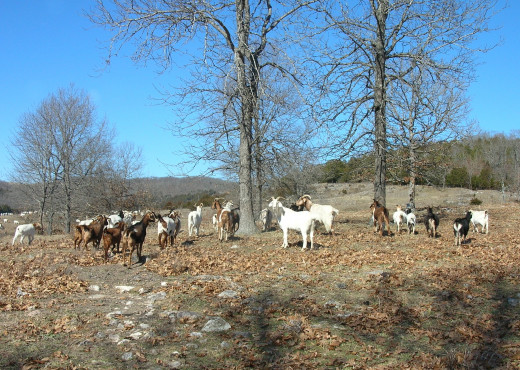
Getting Goats to Breed out of Season
- Langston University Goat & Research Extension
There are a number of different ways to get goats that are seasonal breeders to breed out of season. Some of these methods can also be used to synchronize the estrus cycle in does so they can be bred on a predetermined day for artificial insemination - Langston University Goat Research Extension
Langston University also has excellent one day workshops on the artificial insemination of goats.
Seasonal Breeding in Meat Goats
Most goats are seasonal breeders, with the length of the breeding season varying between individual goats within breeds and between breeds. The breeds of dairy goats that originated in the Alpine Mountains of central Europe (Saanen, Toggenburg, French Alpine, and Oberhasli) have an average breeding season of about six months in Northern Arkansas and Southern Missouri. Nubians and Boers have longer breeding seasons and have more variations in the length of their breeding seasons. These two breeds were developed by crossing diverse types of goats from several different parts of the world. It has been reported that the farther from the equator a breed of goats originates, the shorter is the length of its average breeding season, and breeds (such as the pigmy) that originate on the equator will breed the year around at any location. Savanna Meat goats are also reported to be non-seasonal breeders. It has also been reported that breeds of goats which are seasonal breeders in the northern parts of the United States will breed the year around in the southern most parts of Florida and Texas.
The start and end of the breeding season in goats is determined by changes in day length. In seasonally breeding goats the breeding season usually begins 60 days after the longest day (late August) and ends 60 days after the shortest day (late February.) The dates of coarse would be reversed in the southern hemisphere. It is the change of the length of uninterrupted darkness that determines the beginning and end of the breeding season in goats.
We find that mid to late March kidding works best in this area for optimum utilization of pasture for feed. Pastures are at their peak level of nutrition when does are at their peak level of milk production. December and January kids are ideal for the market meat goat shows at the county, district, and state fairs in Arkansas. October and November kids would be best for the Missouri fairs. Goats would have to be breed out of season to get October and November kids. The average gestation period for goats is five months or 152 days.
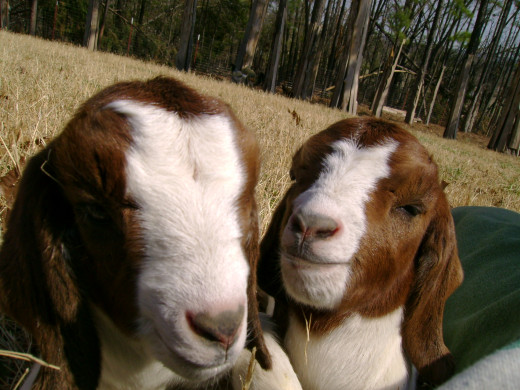
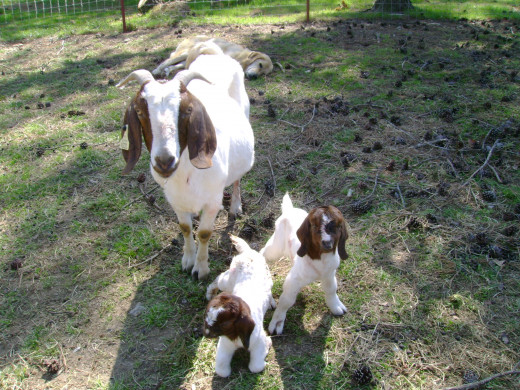
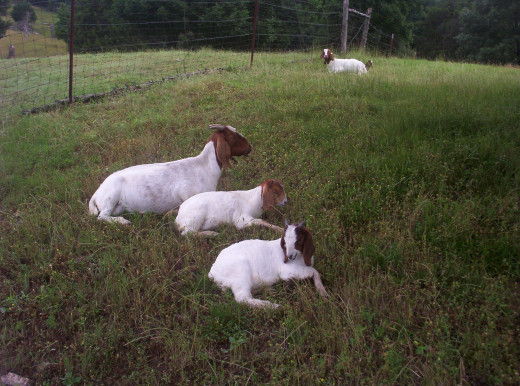
Managing Meat Goats to Increase the Number of Kids Born Per Doe
Research, done in Australia, has shown that running multiple bucks with a herd of does encourages the bucks to rut harder and increases the number of multiple births. Since we have registered Boer goats we can only run one fertile buck with the herd, so we use a vasectomized buck for the second buck. The first vasectomized buck we used was a full blood Boer and he worked fine when he was young but when he got older and we started using a younger herd sire he wouldn't let the younger buck breed the does. So we recommend using a vasectomized Pygmy buck as the second buck. Since Pygmy goats are not seasonal breeders. Vasectomized Pygmy bucks, that rut during the non-breeding season, can often be used to get other breeds of goats to breed out of season.
Research has shown that feeding does high nutrient diets for at least three weeks prior to placing a buck with them increases litter size (sometimes, but not always.) In studies done in Australia and at Cornell University, feeding to increase litter size worked. In studies done at Langston University it did not work. There is a real need for further research on this.
The process of feeding livestock to increase litter size is called flushing. The term flushing is also used in the embryo transplant industry for the process of removing embryos from a donor animal.
We wean our kids on July first. In late August, if pastures are poor, we start feeding small amounts of grain our does. When the acorns start falling we stop feeding grain because the goats get plenty of nutrients from the acorns and pasture. We put the buck with the does on October 7th or 8th. We are able to average two kids per doe using this system. Two kids per doe are ideal for our management practices.
The summer of 2011 was very hot and dry. I had some health problems, and we were unable to feed the does in August. That year there were no white oak acorns but we had a lot of red oak acorns which start falling later than the white oak acorns (about three weeks before we put the buck with the does.) The does were very thin, but they were gaining weight fast when we put the buck with them. We were expecting to get mostly singles. Out of eighteen does, we got one set of twins. The rest of the does had triplets and quadruplets. We averaged over three kids per doe. When the acorns started falling these goats were thinner than we would ever want our goats to be. The extremely hot, dry weather killed most of the internal parasite eggs and larva in the pastures. Under normal weather conditions for northern Arkansas, goats this thin would have been lost to internal parasites. Goats that are not properly fed are more susceptible to internal parasites. These goats were in good condition by time they started kidding.
From 2002 through 2008 our grandchildren showed four does each year at county fair in late August, at district fair in mid-September, and at state fair in early October. These does were fed heavily from July 1st until they got home from state fair when they were put with the buck. They always had single kids. After we quit showing them and fed them like the rest of the herd they averaged twins. Feeding too much can lower litter size.
In our herd young does kidding for the first will have more singles than older does. We feed our doe kids, that are growing, a higher level of nutrition than our dry, older does. This might be why they have more singles. We need more research on this.
Genetics also influences litter size. Some does will always have singles. In our herd they are culled. We had two does that always had triplets and quadruplets. They were mother and daughter, but most of their daughters had normal litter sizes.
This information is not intended to recommend feeding practices for controlling litter size in meat goats. It is intended to show the need for more research on the effects of feeding on litter size in goats.
